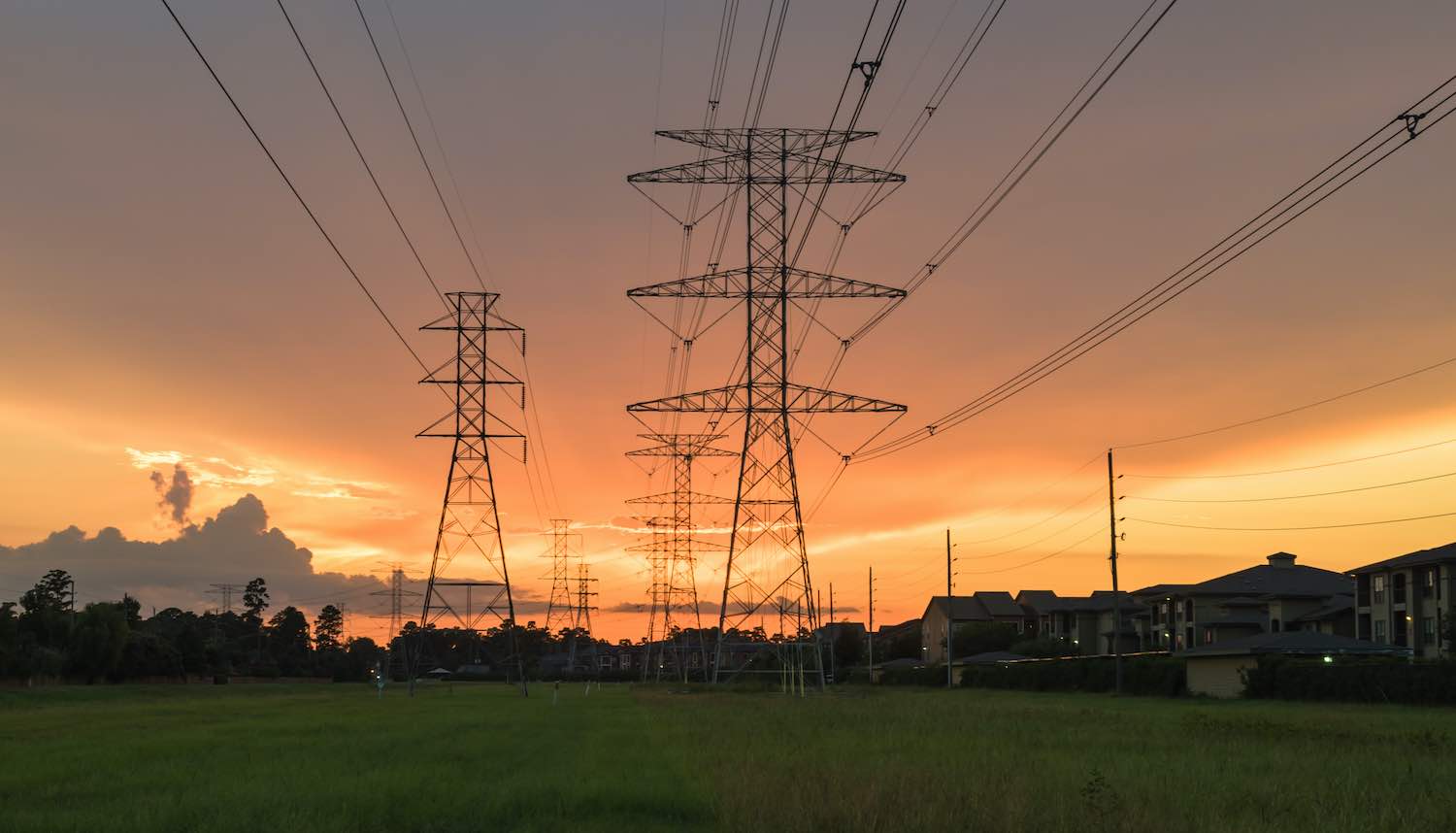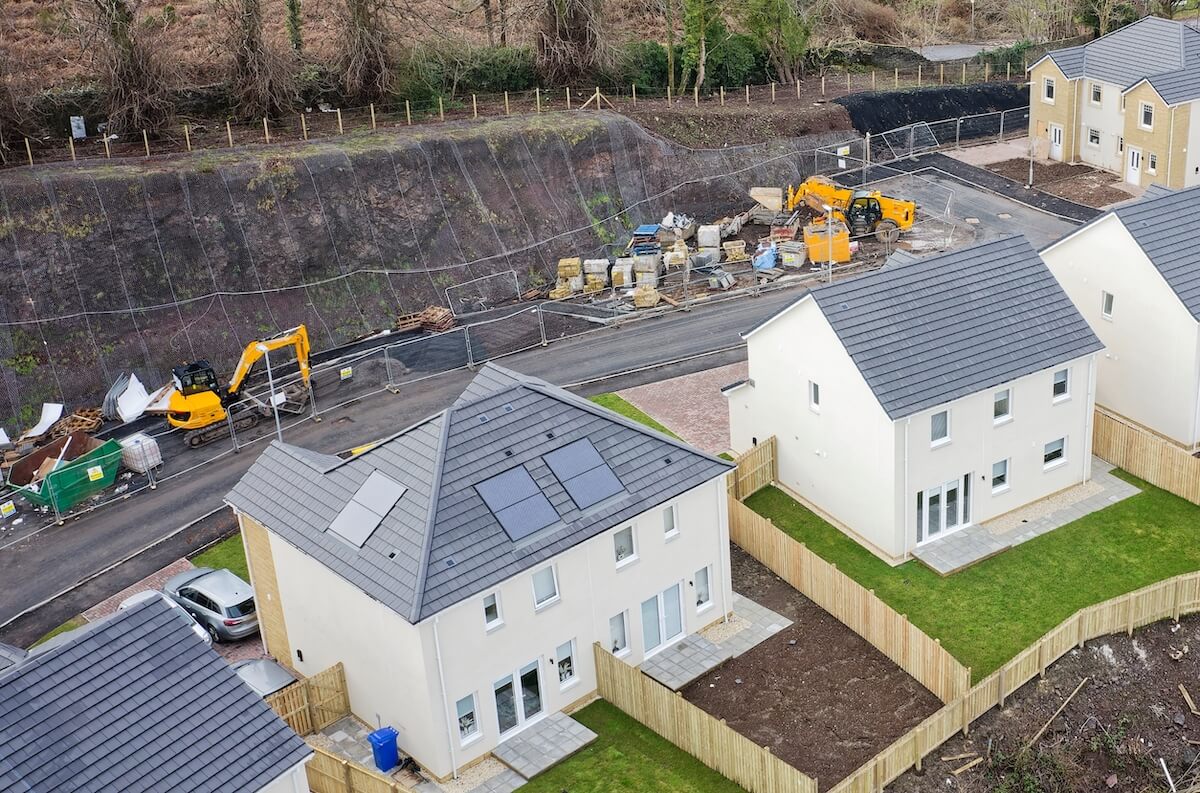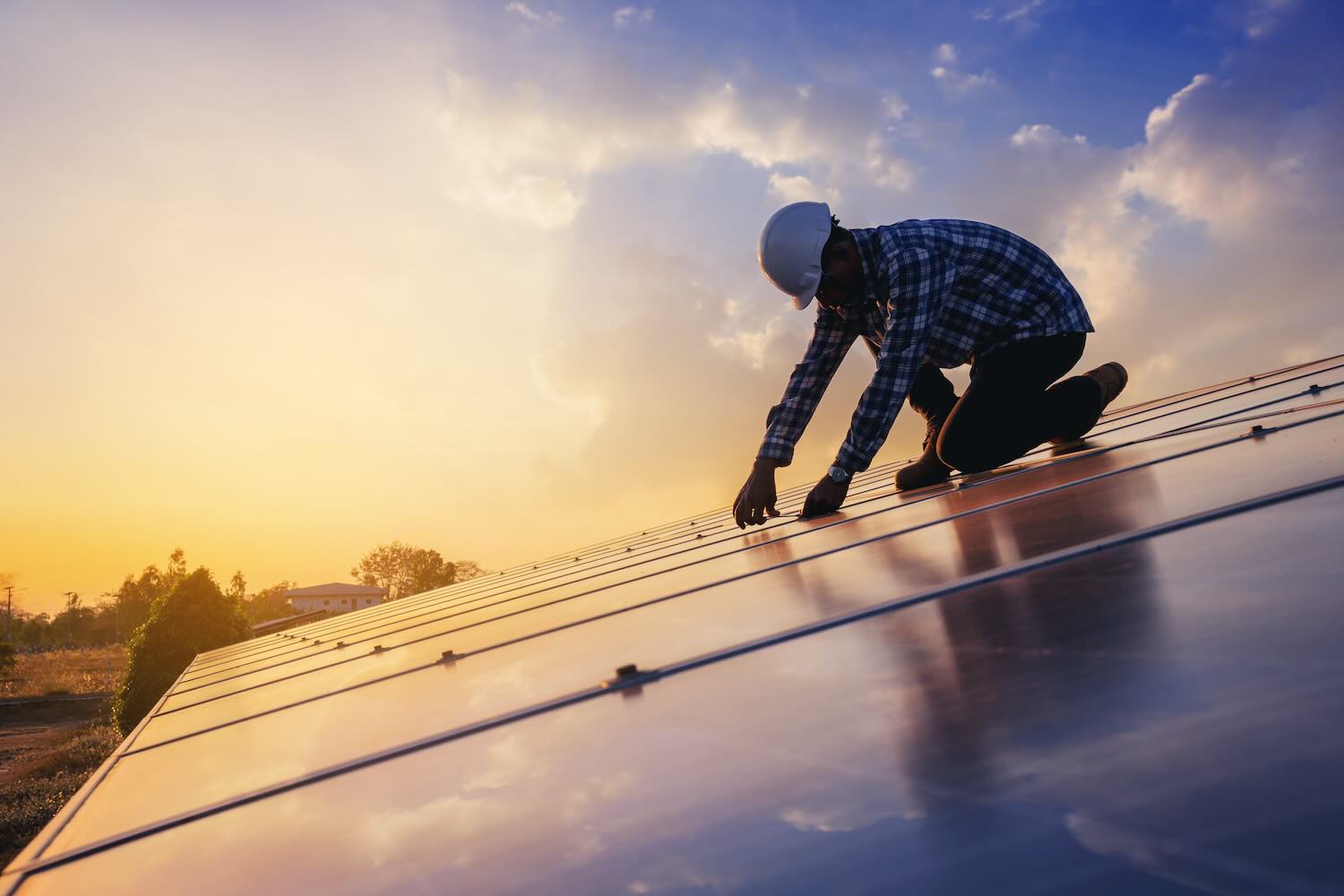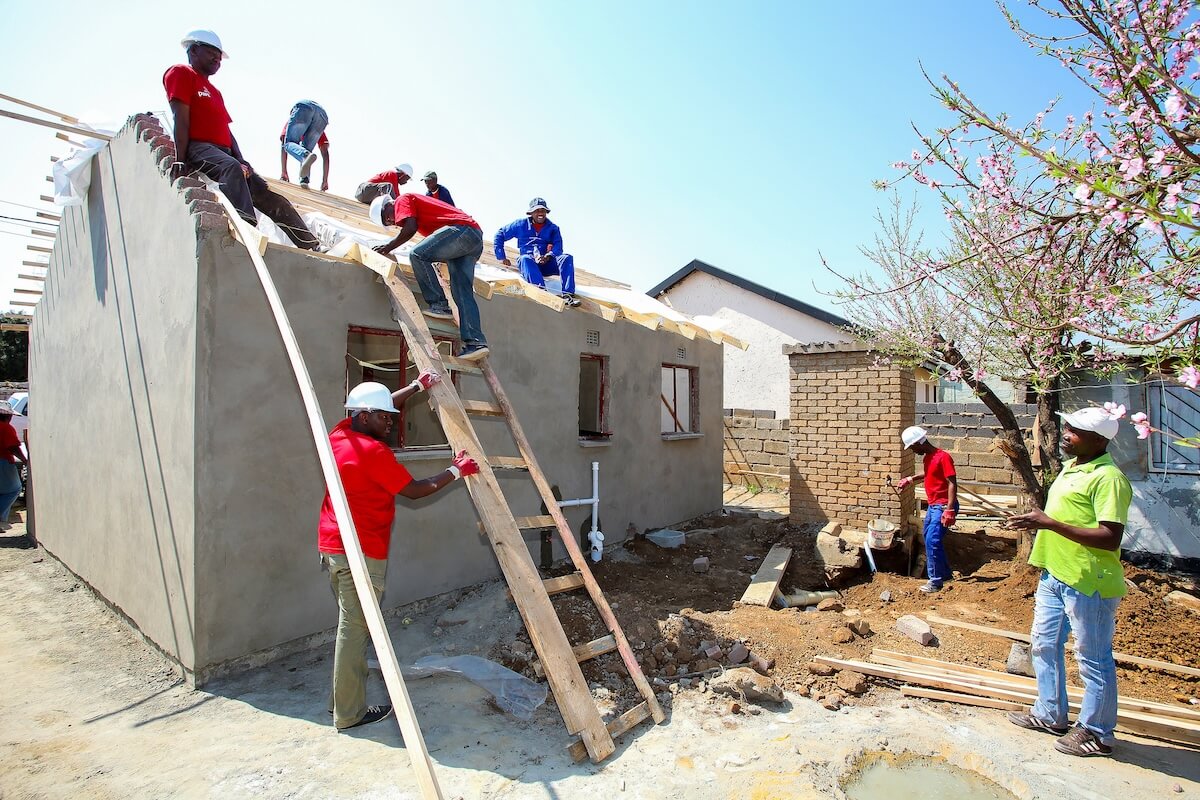ImpactAlpha, Feb. 18 – The claim that frozen wind turbines caused Texas’ harrowing power outages turned out to be all hat, no cattle. The real culprit: Texas utilities’ and regulators’ failure to build a smart and resilient electric grid despite the growing frequency of extreme weather events.
The blackouts that have left many residents without heat and water, coming on the heels of COVID-related economic shutdowns, is highlighting the urgent need to modernize the nation’s aging patchwork of electrical grids. Demand for electricity is expected to triple in the next 20 years, as the economy becomes increasingly electrified, most notably by the accelerating adoption of electric vehicles.
With major new users like charging stations and data centers, the proliferation of distributed and renewable power sources, increasing amounts of battery storage and the need to dynamically and cost-effectively balance supply and demand, the grid of the future looks to be decentralized, digitized, and decarbonized.
The upgrade from a creaky, one-way network of wires to a dynamic and resilient two-way infrastructure for the 21st century recalls the upgrades of telecommunications networks into a two-way digital “information superhighway” in the 1990s and will likewise create new business models, opportunities and fortunes. Increasingly, businesses, communities and even homeowners will be both power consumers and producers, requiring “grid neutrality” in the same way the Internet grew with “net neutrality.”
“Many of the disruptions we are observing or anticipating are very similar to the disruptions that the information technology and the telecom industry went through 20 years ago,” says Emmanuel Lagarrigue, chief innovation officer at Schneider Electric, the major electric equipment supplier.
Deep freeze
Which brings us back to those wind turbines, which were responsible for only about a third of Texas’ lost generating capacity. About two-thirds of the shortfall came from thermal sources, including gas, coal and nuclear energy. Oil production in the state has been slashed by about 4 million barrels a day, almost 40% of the nation’s total. The sub-zero temperatures in a state more accustomed to heat waves caused havoc across all power sources.
“You winterize a power plant the way you winterize your home and make sure the pipes don’t freeze,” Energy Impact Partners’ Peter Fox-Penner told ImpactAlpha. Fox-Penner is the author of Power After Carbon: Building a Clean, Resilient Grid. “It was a lack of preparedness.”
To the chagrin of the state’s solar and wind detractors, the transition to renewables is likely to accelerate as Texas’ utilities undertake a costly round of weatherization upgrades. Falling costs mean it is becoming cheaper to build new solar and wind generation than to operate many fossil fuel plants.
“It’s not going to be the wind farms that people retire early. It’s going to be the fossil fuel plants,” says Rob Day of Spring Lane Capital, a clean-energy infrastructure investor. “And they’ll replace them with lower cost renewables.”
Here are some of the ways that investors are making the grid more resilient and reliable.
Microgrids. The action in energy is moving to the edges of the grid. On-site renewable energy and battery systems can help companies, plants and hospitals be more self-sufficient. “Once you start having on-site virtual utilities, that radically changes the dynamic and the grid,” says Day, explaining why his firm is so excited about microgrids. Microgrids and community-owned power also provide a route to agency for disadvantaged communities who have been at the mercy of utilities.
Crowdfunding platform RaiseGreen offers a six-week accelerator to train project originators that want to create and raise money for renewable projects in their communities.
Smart software. It may not be glitzy, but workhorse software is critical for grid reliability. Predictive analytics and sensors on generating units can flag trouble before it hits. Management programs can optimize performance. System-enabling “foundational” technology is a key focus at Energy Impact Partners.
The firm, whose investors are utilities and other corporations, backed Opus One, which can quadruple the amount of distributed solar a feeder can host by managing the feeder more carefully, and Urbint, which can predict and avoid gas leaks.
Another crucial area: cybersecurity. The grid is a main target of hackers, a risk highlighted by the recent SolarWinds breach.
Vehicle-to-grid. When all those electric vehicles aren’t in use, they are really stores of distributed power – on wheels. Passenger cars can push energy back into the grid (or, in the case of “V to X,” to homes or buildings). More intriguing: moving electric school busses, which sit idle much of the day, to areas that need auxiliary power, and creating a revenue stream for cash-strapped schools.
Amazon’s Jeff Bezos earlier this year awarded a grant to the World Resources Institute to design strategies to electrify the nation’s 450,000 school busses.
Hydroelectric storage and generation. Lithium ion batteries are getting better and cheaper, though their short duration can’t cover prolonged outages. More than 90% of stored electricity in the U.S. is in the form of pumped hydroelectric power, says Dan Reicher, a partner at Climate Adaptive Infrastructure and a Department of Energy staffer in the Clinton administration. In the mechanical system, water gets pumped up to a higher reservoir when electricity is abundant, and released to a lower one to quickly generate power when needed.
“It’s a helpful way to integrate variable solar and wind into the grid,” Reicher says. Massive dams have fallen out of favor, but they remain the only terawatt-scale electricity storage facilities in the world. A better opportunity: adding power generation capacity to some of the country’s 87,000 existing dams without it. Climate Adaptive Infrastructure’s first investment was funding for 22 hydroelectric projects at existing non-powered dams.
Newer hydro projects focus on smaller scale projects, such as putting turbines in rivers or even municipal water pipes flowing downhill. Last April, Schneider Electric and Breakthrough Energy Ventures invested $11 million in Natel Energy in Alameda, Calif., to develop low-cost, “regenerative” hydropower technology that Natel says delivers “habitat creation, improved water quality and sustained increases in groundwater and aquifer recharge rates.”
Transmission. Texas’ electricity network was vulnerable because it is isolated from other regional and national grids. China is building a next-generation “supergrid” that will interconnect its six regional grids via ultra-high voltage transmission lines.
In the U.S, says Spring Lane’s Day, innovative companies are working on high-temperature superconductors to enable power lines to push more power through, as well as smarter ways to bury power lines in cities. Says Day, “People are starting to think about all angles of this.”
Policy. China’s authoritarian system makes it easier to mobilize ambitious modernization efforts like its supergrid. In the U.S. and other places, it can be a trickier challenge. President Biden has made shifting to a green, inclusive economy a central goal, and that will include modernizing the grid. He named Rich Glick, a renewable energy and policy expert, to head the Federal Energy Regulatory Commission, or FERC, which oversees the nation’s power systems
There’s a scramble to deploy more batteries and more clean power. But there is other low-hanging fruit, such as automated demand response programs that enable utilities to dial down thermostats or energy usage when demand spikes, as in Texas this week. The obstacle to greater usage: regulatory policies that act as a disincentive for utilities.
“Fixing the regulatory side of demand-response would open up huge amounts of investment opportunity,” says Day. “And it’s a heck of a lot cheaper than a gas-fired peaker plant.”
Deployment, deployment, deployment. Innovation is great, but deployment of ready-for-primetime technology is the bigger impact opportunity. “We need 80% deployment & 20% innovation, not the other way around,” tweeted Hewlett Foundation’s Marilyn Waite.
“Not only is the technology getting cheaper and better and easier to finance and deploy,” says Generate’s Jigar Shah, “but you also have a lot of tailwind from political leadership saying, ‘It’s the right thing to do, and it’s the right time to do it.’”











